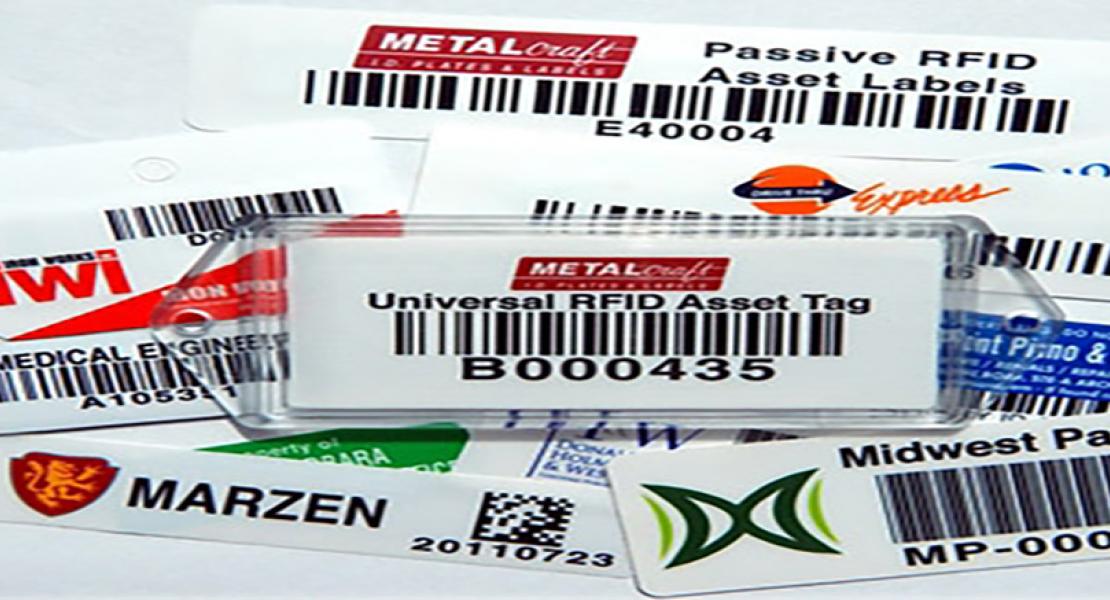Radio frequency identification (RFID) technology can be a very powerful tool so it makes sense people have a lot of questions about what RFID is, how RFID can be used and many questions about one particular component of RFID – the RFID tags. We’ve taken this opportunity to answer some of the more popular questions we hear about something near and dear to our heart – the RFID tag.
Who uses RFID tags?
Literally anyone who wants to track something is a potential user for RFID tags. Schools, hospitals, manufacturing companies, government offices are some of the more common users we see for asset tracking applications. Customers using RFID tags for access control applications include gated communities, car washes, parking companies, tollways. As RFID adoption continues to grow so do the potential users for RFID tags.
How do RFID tags work?
RFID tags transmit data about an item through radio waves to the antenna/reader combination. Passive RFID tags do not have a battery; instead, they use energy from the radio waves generated by the reader.
What is the difference between active and passive RFID tags?
Simply put active RFID tags have a battery and passive RFID tags don’t. Active RFID tags are always on because of their battery whereas passive RFID tags use the power of an interrogator (reader) to power them on or “wake them up”; therefore, passive RFID tags need to be within read range of the reader in order to work. There are benefits to both active and passive RFID tags. Active tags have a longer read range than passive RFID tags; however, they are also more expensive. Passive RFID tags are typically smaller and less expensive than active RFID tags; however, they get less read range than their active counterpart. It really is important to qualify your application to determine which type of RFID tag to use to maximize the return on your investment into the technology.
What are RFID tags typically used for?
Wow, where do I start? We’ve seen RFID applications for everything from vehicles to bales of cotton, so potential applications for RFID technology are limitless. The most common application we see is usually IT assets, i.e., laptops, projectors, printers, etc. This makes sense because these assets are valuable and tend to move around.A smaller or Micro RFID Tag is often needed for these types of applications. We also see a lot of RFID applications for returnable containers, but even that application varies depending on the container, i.e., drums, cylinders, pallets, etc.
What are RFID tags made of?
This question depends on if you want to know what the RFID inlay is made of or what the RFID tag itself is made of. To make sure all bases are covered I will just go ahead and answer both questions. An RFID inlay is made of an integrated circuit (IC) or chip, an antenna, and the substrate. The information for an RFID inlay is stored on the chip and the antenna is used to amplify radio waves to get better read range. An RFID tag, on the other hand, is a label or tag structure where the RFID inlay is inserted into the label/tag construction itself. This typically consists of a printed substrate, the RFID inlay, and an attachment adhesive if the RFID tag is going to be directly attached to the item it is tracking. The substrate itself could be paper, polyester or another type of polymer for a flexible RFID tag.

Are RFID tags waterproof?
That depends on the construction of the RFID tag itself. Is the RFID inlay completely encapsulated? This converting process protects the RFID inlay from moisture and helps ensure maximum performance in the application. This also depends on the construction of the RFID tag. For example, a polyester or other polymer tag is going to be more durable than a paper RFID tag. To give you an idea, we did a 72-hour soak test with our RFID wristband to simulate them being worn at a waterpark. The water had no effect on the RFID tag’s performance. The wristband is made of polypropylene material.
Are RFID tags expensive?
Like the previous questions, that depends on numerous things. First, are we talking about active RFID tags or passive RFID tags? As I previously stated active RFID tags are more expensive than passive RFID tags. The frequency of an RFID tag also affects the cost of the tag. High frequency (HF) tags are typically more expensive than ultra-high frequency (UHF) tags. Conversely, the hardware needed for UHF tags is typically more expensive than the hardware needed for HF tags. Lastly, the cost of the RFID tag depends on the construction of the tag. Paper RFID tags are going to cost less than hard plastic RFIDs or even polyester RFID tags.
Are RFID tags recyclable?
If by recyclable you mean reusable, the answer is a resounding yes! Again, depending on the type of RFID tag used and how the RFID programming is done you most certainly can reuse an RFID tag. You can rewrite the information programmed to the tag with new information or you can take the number already programmed to the RFID tag and change the information associated to it on the backend. We call this the license plate approach and highly recommend it because it provides the greatest flexibility in usage for your RFID tags.
We also get asked how people make sure their RFID tags are not reused. We have a solution for this as well. Metalcraft has a couple of different product options for tamper-indicating and/or destructible RFID tags. We offer our Destructible RFID Windshield Tags and two different options for our patented product DuraDestruct RFID Security Tags.
Are there issues with privacy by using RFID tags?
One common misnomer about RFID tags is that they are an invasion of privacy, when in actuality the technology is quite secure. We encourage our customers to utilize a license plate approach meaning they assign a number to the tag and corresponding asset. They then associate the number to the information about that asset on the backend. Without access to the backend database even if someone had an RFID reader that was able to read the tags all they would see is a meaningless number. As an added level of security, information programmed into the RFID tags can also be locked and password protected.
What are some examples of RFID tags being used?
Customers come to us with different applications for RFID tags all the time. The most popular applications in which we see RFID tags being used is with IT assets, i.e., laptops, printers, projectors, etc. However, we see new applications for RFID tags every week. Gated communities, car washes, parking companies, toll passes are all examples of RFID tags being used on vehicles. Schools and hospitals have a lot of equipment that travels and needs to be tracked with RFID tags. We also see a lot of applications for RFID tags with audio visual/production equipment to make sure equipment that goes out on location returns where and when it is supposed to be. Work-in-process applications on the production assembly line are another example of RFID tags being used. Essentially the RFID tag is read at different stops in the production process to track information about what is being produced. The potential applications for RFID tags are truly endless.
How do RFID tags work with inventory management?
RFID technology is great for inventory management due to the ability to read items in inventory in bulk rather than having to scan items individually. The information obtained from the scan can then be compared to the demand for items in inventory and managed.
For more information on RFID tags or to get started on your RFID application contact Metalcraft at 800-437-5283 or [email protected].
 | About the Author: Tyler JohnsonTyler has extensive experience and expertise in the identification industry. Prior to Grey Trunk RFID, he worked at Metalcraft which helped him understand the importance of a high quality identification tag. Now he is leading the team at Grey Trunk RFID to offer the complete solution. |




